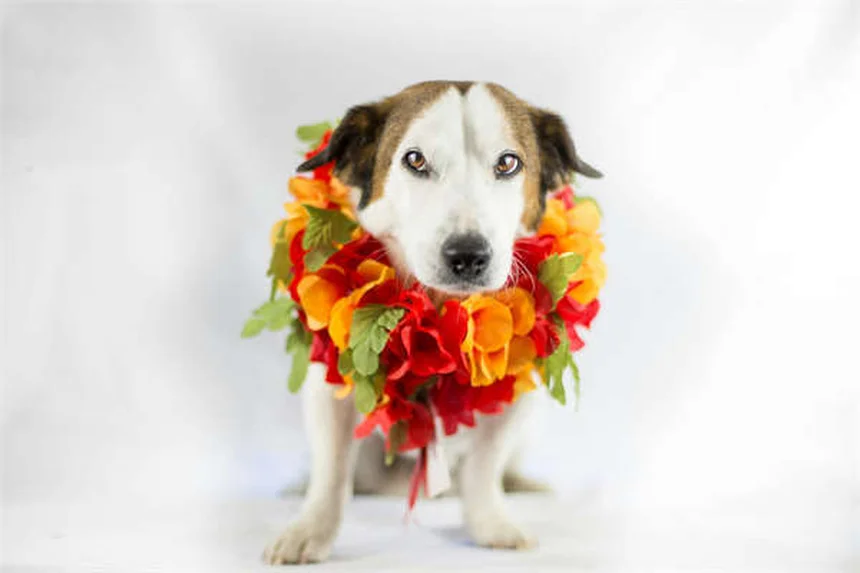How to Reduce Pet Allergies for Visitors: 7 Proven Tips
How can you reduce pet allergies for visitors? The answer is simple: with some smart preparation and these 7 proven strategies, you can make your home more comfortable for allergy-prone guests without banishing your furry friends. I've been through this struggle myself when my best friend - who turns into a sneezing machine around cats - wanted to visit my two Persian furballs. Here's the deal: pet dander (those microscopic skin flakes) is the real culprit, not the fur itself. These tiny particles stick to everything - your couch, carpets, even the air. But don't worry! After years of trial and error (and some hilarious failed experiments), I've perfected a system that keeps both my pets and allergic guests happy. Pro tip: Start preparing at least 3 days before their visit for best results!
E.g. :Is Your Dog's Bed Causing Allergies? 5 Signs to Watch For
- 1、Understanding Pet Allergies
- 2、Pre-Visit Preparation
- 3、During the Visit Strategies
- 4、Emergency Solutions
- 5、Long-Term Solutions
- 6、Beyond the Basics: Advanced Allergy Management
- 7、Unexpected Allergy Allies
- 8、Social Solutions for Pet Lovers
- 9、Tech Gadgets That Actually Help
- 10、Psychological Aspects of Pet Allergies
- 11、FAQs
Understanding Pet Allergies
Why Do Some People React to Pets?
Ever walked into a friend's house and suddenly felt like you inhaled a pepper shaker? That's what pet allergies feel like for many people. Pet dander (those tiny skin flakes), saliva, and even urine can trigger sneezing fits, itchy eyes, or worse. It's not the fur itself causing trouble - it's the proteins clinging to it!
Think of it like this: when your dog shakes off after a bath, they're not just flinging water. They're sending microscopic allergy triggers flying through your home. These particles can linger in carpets, furniture, and air for months. That's why some guests might start reacting even if your pet isn't in the room.
Severity Levels Matter
Not all pet allergies are equal. Here's a quick comparison:
| Reaction Level | Symptoms | Recommended Action |
|---|---|---|
| Mild | Sneezing, runny nose | Basic cleaning measures |
| Moderate | Wheezing, skin rashes | Strict pet-free zones |
| Severe | Difficulty breathing | Avoid home visits |
If your best friend turns into a human fountain around animals, you'll need different strategies than for someone who just gets the occasional sniffle. Always ask guests about their allergy severity before they visit.
Pre-Visit Preparation
 Photos provided by pixabay
Photos provided by pixabay
The Deep Clean Challenge
You know that "spring cleaning" energy? Channel it when preparing for allergic guests. Start 3 days before their visit - pet allergens don't vanish with one quick vacuum.
Here's my battle plan: First, wash all bedding in hot water (130°F minimum). Then attack soft surfaces with a HEPA-filter vacuum. Don't forget curtains and drapes! Last weekend, I spent two hours cleaning only to realize my cat's favorite napping spot was the curtain behind my couch. Rookie mistake.
Create a Pet-Free Sanctuary
Ever slept in a bed that smelled like wet dog? Not pleasant, right? Designate one completely pet-free room - ideally where your guest will sleep.
This means:- No pet beds- No feeding stations- Not even that "cute" photo of Fluffy wearing sunglasses
I keep my guest room locked 24/7 after catching my golden retriever using the spare bed as his personal throne. Pro tip: Put fresh clothes in there too - your "clean" sweater might be covered in invisible dander.
During the Visit Strategies
Air Quality Control
Did you know indoor air can be 2-5 times more polluted than outdoor air? That's wild! Here's how to fix it:
1. Open windows (weather permitting)2. Run air purifiers in high-traffic areas3. Change HVAC filters beforehand
I invested in a smart air purifier that shows real-time allergen levels. Last Thanksgiving, it turned red when my uncle walked in wearing his cat-hair-covered sweater. Technology doesn't lie.
 Photos provided by pixabay
Photos provided by pixabay
The Deep Clean Challenge
Here's a question: What's harder than keeping a squirrel away from birdseed? Keeping your Labrador away from guests with treats in their pockets!
The solution? Create an irresistible alternative space. I set up a "pet paradise" in my basement with:- New chew toys- A puzzle feeder- White noise to mask visitor sounds
It's like building a kids' playroom - if you make it fun enough, they won't want to leave. Bonus: Your guests won't find dog slobber on their handbags.
Emergency Solutions
Allergy Kit Essentials
Imagine this: Your cousin arrives and immediately starts sneezing like she's in a pollen tornado. What now?
Your allergy emergency kit should include:- Antihistamines (check expiration dates!)- Saline nasal spray- Eye drops- Face masks (the stylish kind)
I keep mine in a bright red box labeled "Allergy Armor" - because who doesn't want to feel like a superhero when saving the day? Remember: Always ask about medication allergies before offering anything.
Plan B Locations
Sometimes, despite your best efforts, the allergies win. Have backup options ready:
- Local pet-friendly hotels (ironic, but some have hypoallergenic rooms)- Nearby cafes with outdoor seating- Your neighbor's house (just kidding... mostly)
Last year, my allergic friend and I ended up having our "visit" at a rooftop bar three blocks away. Turns out, high-altitude cocktails make great allergy medicine. (Just saying.)
Long-Term Solutions
 Photos provided by pixabay
Photos provided by pixabay
The Deep Clean Challenge
Here's a fun fact: Regular brushing removes up to 90% of loose hair and dander. That's like getting rid of 9 out of 10 allergy triggers!
For dogs:- Brush 3x weekly- Bathe every 2-4 weeks- Wipe paws after walks
For cats:- Use grooming gloves (they think it's petting)- Try waterless shampoo foam- Keep brushing sessions short and sweet
My cat used to hate grooming until I discovered cheese-flavored wipes. Game changer. Now he comes running when he sees the package.
Home Modifications Worth Considering
Why do we put wall-to-wall carpet in homes with pets? It's like installing a giant allergen sponge!
If you're serious about reducing allergens:- Replace carpets with hard flooring- Install washable slipcovers on furniture- Use allergen-proof mattress covers
I switched to leather couches last year and my allergic sister can now visit without turning into a sneeze machine. Downside: My dog slides off them like they're ice rinks. Worth it.
Beyond the Basics: Advanced Allergy Management
The Science Behind Hypoallergenic Pets
You've probably heard about "hypoallergenic" breeds, but what does that really mean? No pet is 100% allergy-free, but some produce fewer problematic proteins. Take the Siberian cat - studies show about 50% of allergic people tolerate them better than other breeds.
Here's something fascinating: researchers found that certain dog breeds like Portuguese Water Dogs produce less of the Can f 1 protein, the main culprit in dog allergies. But remember, individual reactions vary wildly. My neighbor swears by her Labradoodle, while her sister still sneezes around it.
Immunotherapy Options Worth Exploring
Ever wish you could train your immune system like you train your dog? That's essentially what allergy shots do! Subcutaneous immunotherapy involves regular injections of tiny allergen amounts, gradually building tolerance.
The newer sublingual tablets dissolve under your tongue daily. Takes about 3-6 months to see improvement, but many patients report 60-80% symptom reduction. My cousin went from carrying an EpiPen to pet-sitting my cat - now that's progress!
Unexpected Allergy Allies
Houseplants That Fight Allergens
Who knew your fiddle leaf fig could double as an air purifier? Certain plants actually help remove airborne allergens:
| Plant | Allergy-Fighting Power | Care Difficulty |
|---|---|---|
| Spider Plant | Removes formaldehyde | Easy |
| Bamboo Palm | Filters benzene | Medium |
| Peace Lily | Reduces mold spores | Easy |
Just avoid overwatering - moldy soil defeats the purpose! I keep a snake plant in my bedroom because it thrives on neglect (perfect for my black thumb).
The Probiotic Connection
Here's a weird twist: gut health might influence pet allergies. Emerging research suggests certain probiotics could help modulate immune responses. A 2022 study found participants taking Lactobacillus rhamnosus had reduced allergy symptoms around cats.
Now I'm not saying to swap your antihistamines for yogurt, but adding fermented foods certainly can't hurt. My morning routine includes kefir smoothies - bonus points if I remember to take my actual medicine too!
Social Solutions for Pet Lovers
Allergy-Friendly Gathering Ideas
Why limit yourself to indoor visits when you could host a backyard movie night? Outdoor spaces naturally dilute allergens. String up some lights, set out folding chairs, and cue the pet-friendly film (Air Bud, anyone?).
For winter months, consider "pet shifts" - schedule visits when your animal can be at doggy daycare or with a pet sitter. Last Christmas, we did a "golden hour" where my dog visited relatives first, then went to his crate with a special chew while we ate.
The Clothing Swap Trick
Ever notice how your favorite sweater becomes a magnet for pet hair? Here's a clever hack: keep dedicated "guest clothes" in your allergy-safe room. Provide fresh outfits for visitors to change into upon arrival.
I stock oversized cotton tears and lounge pants in neutral colors. They're comfy enough that no one minds wearing them, and they stay hair-free in the sealed closet. Pro tip: Include socks - nothing ruins a visit like stepping barefoot on a hair-covered bathroom mat!
Tech Gadgets That Actually Help
Smart Cleaning Robots
Roomba's great, but have you met its high-tech cousins? The newest robotic vacuums like the Roborock S8 Pro Ultra feature allergen-specific settings, automatically increasing suction power when detecting pet dander.
I programmed mine to run after my dog's morning zoomies. Watching it chase stray fur balls gives me the same satisfaction as seeing a Roomba trapped by a rug - but way more productive!
Air Quality Monitors
How clean is your air really? Devices like the Awair Element track particulate matter in real-time, sending alerts when allergen levels spike. It's like having a weather report for your living room.
Mine once detected a problem I'd never considered - turns out my scented candles were releasing particles that aggravated my friend's allergies. Now I stick to unscented beeswax. Who knew?
Psychological Aspects of Pet Allergies
The Guilt Factor
Ever feel terrible asking someone to medicate just to visit you? That's normal. But consider this: your allergic friends want to see you (and your pets) just as much as you want to host them.
Open communication helps tremendously. One friend and I developed a code word - when she says "pineapple," I know to whisk my dog away for a bathroom break so she can regroup. Works better than awkwardly pretending not to notice her watery eyes!
Building Tolerance Over Time
Here's an encouraging thought: some people develop increased tolerance with repeated, controlled exposure. It's not guaranteed, but I've seen several friends go from "instant reaction" to "manageable sniffles" after regular short visits.
The key is gradual exposure in clean environments. Start with 15-minute visits in freshly cleaned spaces, slowly increasing duration as tolerance builds. Think of it like weight training for your immune system!
E.g. :Tips for Helping Guests with Dog Allergies | Tips for Helping Guests ...
FAQs
Q: How long before a visit should I start cleaning to reduce pet allergens?
A: You'll want to start your allergen-reduction routine at least 3 days before guests arrive. Why? Because pet dander doesn't disappear with one quick vacuum. On day one, wash all bedding and curtains in hot water (130°F minimum). Day two, deep clean carpets and upholstery with a HEPA-filter vacuum. On day three, do a final dusting and run air purifiers. I learned this the hard way when I cleaned my apartment the morning of a visit, only to watch my cousin turn into a sneezing fountain within minutes. Trust me, this staggered approach makes all the difference!
Q: What's the most effective way to keep pet allergens out of a guest bedroom?
A: Creating a true pet-free sanctuary requires more than just keeping the door closed. First, remove all pet items - beds, toys, even that "adorable" framed photo of Mr. Whiskers. Wash all surfaces with hot, soapy water, including walls and baseboards. Use allergen-proof covers on mattresses and pillows. I even go the extra mile by storing clean guest clothes in sealed plastic bags. Pro tip: After my golden retriever "broke into" the guest room through a slightly open window, I now keep it locked 24/7. It might seem extreme, but your allergic guests will thank you!
Q: Are air purifiers really worth the investment for pet allergies?
A: Absolutely! A good HEPA air purifier can remove up to 99.97% of airborne allergens. Place one in the guest bedroom and another in your main living area. I splurged on a smart purifier that shows real-time allergen levels - it's shocking how much difference proper air filtration makes. Budget tip: If you can't afford multiple units, move one purifier to wherever your guest will be spending time. Just last week, mine alerted me that my "clean" living room still had moderate dander levels until I ran it for two hours. Science doesn't lie!
Q: How often should I bathe my dog to help with visitor allergies?
A: For most dogs, a bath every 2-4 weeks with hypoallergenic shampoo works wonders. But here's the key - give them a thorough bath 1-2 days before guests arrive for maximum effect. I made the mistake of bathing my lab the morning of a visit once, only to realize wet fur actually spreads more allergens temporarily! Bonus tip: Wipe your dog's paws after walks too - you'd be amazed how much pollen and outdoor allergens they track in. My allergic friend can now visit for hours instead of minutes since I implemented this routine!
Q: What should I include in an emergency allergy kit for guests?
A: Your allergy emergency kit should be ready before guests arrive. Mine includes: antihistamines (check expiration dates!), saline nasal spray, preservative-free eye drops, and some stylish face masks. I keep everything in a bright red box labeled "Allergy Armor" - because why not make it fun? Important: Always ask about medication allergies before offering anything. Last Christmas, my kit saved the day when my niece unexpectedly reacted to my newly-adopted rescue cat. Pro move: Include some herbal tea bags too - sometimes a warm drink helps soothe irritated throats!







